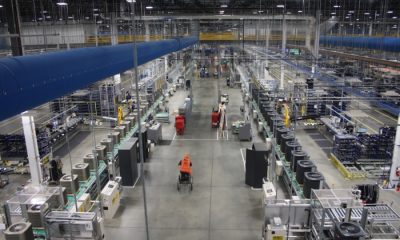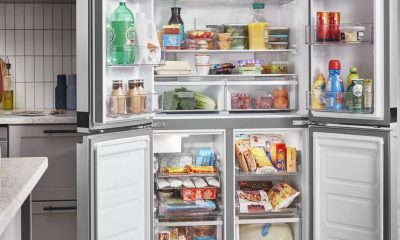Home Improvment
Attic Insulation: A Key Player in Your Home’s Energy Efficiency

With the growing awareness of climate change and rising energy costs, energy efficiency has moved from a mere trend to a necessity for homeowners. An energy-efficient home doesn’t just curb your electricity usage and reduce utility bills; it also lessens environmental stress, making it part of a larger sustainability puzzle. Energy efficiency involves optimizing your home’s energy consumption and addressing areas where energy is commonly lost. It starts with simple measures like swapping lightbulbs for LEDs to more impactful changes like enhancing attic insulation. A poorly insulated attic, in particular, may be a significant source of energy loss, making cooling systems struggle in the summer and heating systems work harder in the winter. Homeowners may provide a solid foundation for an energy-efficient house by upgrading attic insulation.
How Attic Insulation Works
The principle of attic insulation is straightforward yet powerful: It acts as a thermal barrier, stabilizing your home’s internal climate regardless of external conditions. During winter, without attic insulation, warm air generated from heating systems naturally rises and escapes through the roof, leading to energy wastage. Conversely, in hot climates during the summer, the sun’s heat can penetrate the attic, transferring warmth to the living spaces below and increasing dependence on air conditioning systems. With proper insulation, these challenges are mitigated as the material prevents the transfer of heat. Companies such as Denver attic specialize in creating customized insulation solutions that help maintain a consistent indoor environment while encouraging energy savings.
Types of Attic Insulation
Selecting the appropriate kind of attic insulation is essential for optimizing energy efficiency. There are several types of insulation, each with its own set of advantages. Fiberglass batts, for instance, are widely used due to their simplicity in installation and availability. They come in rolls or pre-cut panels and are adept at filling large spaces between attic joists. On the other hand, spray foam insulation is celebrated for effectively sealing gaps and cracks, offering robust insulation and air barrier properties. For homeowners with environmental concerns, cellulose insulation is an eco-friendly option from recycled paper products treated for fire resistance. Selecting the appropriate insulation type depends on various factors like climate, budget, and the specific architecture of your home.
Benefits of Proper Attic Insulation
When attic insulation is installed correctly, the benefits transcend mere energy savings. Beyond reducing your reliance on heating and cooling systems, thus lowering energy bills, it improves indoor air quality by minimizing the entrance of pollutants, allergens, and outdoor noise. This contributes to a healthier and quieter home environment. Furthermore, residential buildings account for over 20% of the total energy usage in the U.S., emphasizing proper insulation’s critical role in energy conservation. It also often adds resale value to homes, as potential buyers prioritize energy efficiency features when searching for properties.
Cost Savings and Environmental Impact
The financial benefits of attic insulation are among its most attractive characteristics. By effectively controlling the temperature within your home, insulation reduces the workload on heating and cooling systems, leading to short-term and long-term energy cost savings. But the impact extends beyond financial savings. With concerns about global warming and carbon emissions, reducing the amount of energy your home requires directly lowers its carbon footprint. As societies worldwide attempt to combat climate change, taking steps to ensure energy efficiency at the home level, such as insulating attics, becomes a personal contribution to global environmental efforts.
Choosing the Right Insulation
Deciding on the type of insulation that fits your home best can be overwhelming. Several considerations need to be factored in, including the climate you live in, the specific architecture of your home, and your budget constraints. Engaging in a professional energy assessment can offer detailed insights into your home’s current energy status, helping identify the most effective insulation material and method for your situation.
Signs You Need New Insulation
Over time, even the best insulation can degrade, becoming less effective. Several indicators suggest it’s time for an upgrade or replacement. Noticeable drafts in certain rooms, fluctuating indoor temperatures despite regular HVAC activity, and escalating energy bills without apparent cause can all signify insufficient or deteriorated insulation. Also, your home is over a decade old and hasn’t had an insulation update. In that case, it’s wise to seek a professional evaluation to assess the state of your attic insulation. Ensuring it is up to par helps sustain an energy-efficient and comfortable home environment.




